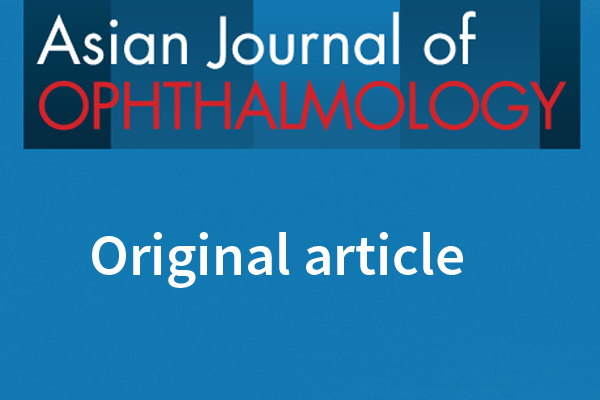Results of early versus standard silicone stent removal following external dacryocystorhinostomy under local anesthesia
Abstract
Introduction: Many patients in Nepal travel vast distances to have their surgeries in Kathmandu. They often remain close by until their follow-up visit for their silicone tube removal, which contributes to a large financial burden on them and their families. Hence, reducing the time for which silicone tubes remain in situ following external dacryocystorhinostomy (DCR) provides significant benefits to patients. Furthermore, this is the first comparative study which has successfully demonstrated the earliest timeframe for which silicone tubes can be removed following DCR in the medical literature.
Methods: A randomized controlled trial consisting of 144 patients was designed to compare patient outcomes after early (2 weeks postoperatively) versus standard (6 weeks postoperatively) removal of silicone stents. The success of their procedures was determined when patients were assessed both symptomatically and anatomically at their 6-month follow-up.
Results: The surgical success in both groups was high at 97.8% collectively in both groups and there were only a small number of patients who were lost to follow-up (5 patients) at 6 months. There was no statistical difference at removing silicone stents at 2 or 6 weeks postoperatively.
Conclusion: These results were consistent with our pilot study, which showed no statistical difference in long-term success following silicone tube removal at 2 and 6 weeks.
References
Kang MG, Shim WS, Shin DK, et al. A Systematic Review of Benefit of Silicone Intubation in Endoscopic Dacryocystorhinostomy. Clin Exp Otorhinolaryngol. 2018;11(2):81-88.
Limbu B, Lyons HS, Shrestha MK, et al. Comparison of early versus standard timing for silicone stent removal following External Dacrocystorhinostomy under local anaesthesia. Nepal J Ophthalmol. 2019;11(21):24-28.
Kashkouli MB, Parvaresh M, Modarreszadeh M, et al. Factors affecting the success of external dacryocystorhinostomy. Orbit. 2003;22(4):247–255.
Choung HK, Khwarg SI. Selective non-intubation of a silicone tube in external dacryocystorhinostomy. Acta Ophthalmol Scand. 2007;85(3):329-332.
Feng, YF, Cai, JQ, Zhang, JY, et al. A meta-analysis of primary dacryocystorhinostomy with and without silicone intubation. Can J Ophthalmol. 2011;46:521–527.
Rather S, Singh T. External dacryocystorhinostomy with & without silicon tube intubation in chronic dacryocystitis with nasolacrimal duct block. JK Sci. 2013;15:24–27.
Xie C, Zhang L, Liu Y, et al. Comparing the Success Rate of Dacryocystorhinostomy With and Without Silicone Intubation: A Trial Sequential Analysis of Randomized Control Trials. Sci Rep.2017;7(1):1936.
Kim NJ, Kim JH, Hwang SW, et al. Lacrimal silicone intubation for anatomically successful but functionally failed external dacryocystorhinostomy. Korean J Ophthalmol. 2007;21(2):70–73.
Buttanri IB, Serin D, Karslioglu S, et al. The outcome of silicone intubation and tube removal in external dacryocystorhinostomy patients with distal canalicular obstruction. Eur J Ophthalmol. 2012;22(6):878-881.
Charalampidou S, Fulcher T. Does the timing of silicone tube removal following external dacryocystorhinostomy affect patients’ symptoms? Orbit. 2009;28(2-3):115-119.
Vicinanzo MG, McGwin G, Boyle M, et al. The consequence of premature silicone stent loss after external dacryocystorhinostomy. Ophthalmology 2008;115(7):1241–1244.
Kumar V, Abbas AK, Fausto N, et al. Robbins and Cotran pathologic basis of disease. Philadelphia: Elsevier Saunders; 2005.
NuhoÄŸlu F SK, Ozdemir FE. Outcome of External Dacryocystorhinostomy with Bicanalicular Silicone Tube Stenting. JAREM. 2014;4:88-92.

Copyright (c) 2020 Ben Limbu, Benjamin Sim, Mohan K. Shrestha, Geoffrey Tabin, Rohit Saiju

This work is licensed under a Creative Commons Attribution 4.0 International License.
Authors who publish with this journal agree to the following terms:
- Authors retain copyright and grant the journal right of first publication, with the work twelve (12) months after publication simultaneously licensed under a Creative Commons Attribution License that allows others to share the work with an acknowledgement of the work's authorship and initial publication in this journal.
- Authors are able to enter into separate, additional contractual arrangements for the non-exclusive distribution of the journal's published version of the work (e.g., post it to an institutional repository or publish it in a book), with an acknowledgement of its initial publication in this journal.
- Authors are permitted and encouraged to post their work online (e.g., in institutional repositories or on their website) prior to and during the submission process, as it can lead to productive exchanges, as well as earlier and greater citation of published work (See The Effect of Open Access).


